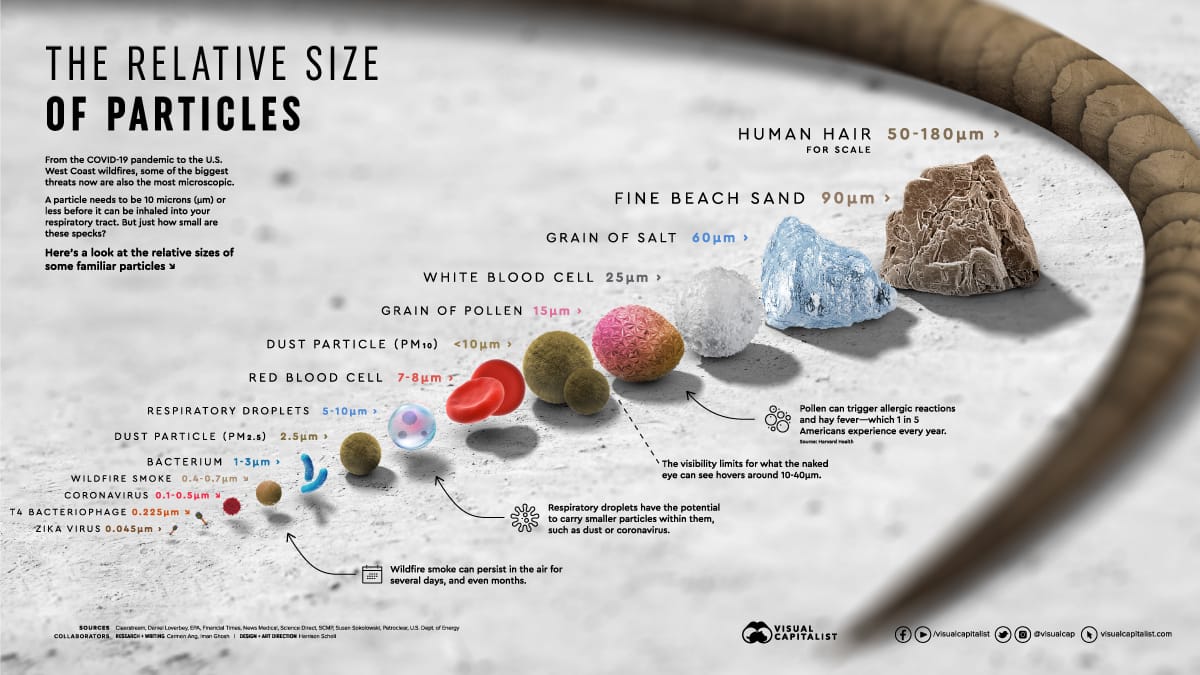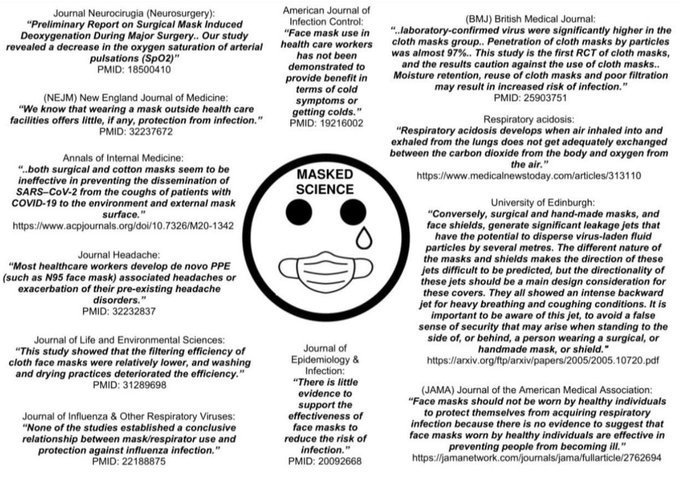How Effective Are Masks in Reducing the Spread of the Coronavirus?
Executive Summary
- The public has been repeatedly told that masks are highly effective in limiting the spread of the coronavirus.
- How true is this claim?

Introduction
Medical authorities worldwide have supported masking to minimize the spread of the coronavirus. However, there has been surprisingly little research into the effectiveness of masking, particularly considering how many entities support its efficacy. In this article, we will review the evidence for the effectiveness of masking.
Our References for This Article
If you want to see our references for this article and related Brightwork articles, visit this link.
Fauci’s Flip Flop on Masking Effectiveness
Jimmy Dore was one of the first to pick up on Fauci’s changing story on masks.
So, which is it? Do masks help, or don’t they? Why are we now wearing masks again as of September 2021? Fauci seems unable to speak clearly and to describe proportionality. I often get better and more precise explanations from the people I ask questions about at a grocery store.
Fauci speaks in very binary terms that are imprecise and not a scientific way of speaking. Fauci seems to speak more like a person with no scientific training than a person at the top of the scientific community. If a person cannot speak scientifically, it is unlikely they are behaving scientifically and should be used to measure their credibility, regardless of their certifications.
Between two video interviews of Fauci, he directly contradicts himself. In one interview,
“there is no one for people to be wearing masks”
to
“now we know that masks work to prevent infection and to prevent you from infection others.”
This occurs again in the following video.
Amazing. Why do CNN and the rest of the establishment media keep interviewing this man?
In one interview, masks have no effect and should not be worn. Then months later, masks are mandatory because they are so effective. People have said, “but the science changed.”
This is false.
And it assumes that the only information on virus transmission came from observing the coronavirus. Anyone saying this is either lying or has no idea what the scientific literature says on the topic. Much material was published on masks and viruses when Fauci made his first comments.
- Jimmy Dore is correct in catching Fauci in flip-flopping.
- Jimmy Dore is incorrect that masks are effective against viruses.
This video also shows Fauci’s flip-flopping on masks.
Using Cloth to Stop the Spread of Viruses?
Viruses are extraordinarily small. The size of the coronavirus is shown in the following graphic from the Visual Capitalist.

Maskers don’t seem to realize how small a virus is. Think of the size of a grain of sand which is about all we can see. Observe how the grain of sand is enormous compared to the size of the coronavirus. A virus will go right in between the fibers of a typical mask. Will many of the viruses be caught in the mask fibers? Certainly, but many will get through. And very few individual viruses are necessary to infect the individual. In real-life examples, masks don’t do much to stop viruses’ spread. Furthermore, the masks that have the strongest filters — like the N95, cannot be worn for long periods.
This is explained in this video.
This video is excellent, and it was published in October 2020. Early into the pandemic, and observed that the only study on cloth masks showed an increased risk. Usually the proposal is that “no one could have known” and that the “science changed,” but this video demonstrates the ineffectiveness of masks for virus management has been known for a long time.
However, upon reviewing the article, after its initial publication, I now find that the video was taken down, most likely by Google. Google has been very big on censoring videos that contradict the health authorities, even though they have not accurately represented the scientific studies in their policies.

Let us see if Google tries to take down this graphic.
A Quick Synopsis of Mulitple Mask Studies: The Exact Opposite of What the Medical Establishment and Establishment Media Tell Us
N95 filtering facepiece respirators (FFRs) are constructed from electret (a dielectric material that has a quasi-permanent electric charge.) An electret generates internal and external electric fields so the filter material has electrostatic attraction for additional collection of all particle sizes. As flow increases, particles will be collected less efficiently.
A properly fitted N95 will block 95% of tiny air particles down to
0.3 μm from reaching the wearer’s face.Problem: no source control. An N95 does not filter exhaled air passing through the exhaust/exhalation valve (for easier breathing and less moisture inside the mask).
All the cloth masks and materials had near zero efficiency at 0.3 µm, a particle size that easily penetrates into the lung (SARS-CoV-2 is 0.125 µm)
Surgical masks are better than cloth but not very efficient at preventing emissions from infected patients.
Overall, data were collected from 714 men and women. Of all ages, only 90 participants (12.6%) passed the visual mask fit test. About 75% performed strap placement incorrectly, 61% left a “visible gap between the mask and skin,” and about 60% didn’t tighten the nose-clip.
Masks did not provide benefit in terms of cold symptoms or getting cold. Study of surgical face mask use in health care workers (2009, Japan).
6 randomized controlled trials (RCTs) involving 9,171 participants were included (2015-2020). There were no statistically significant differences in preventing laboratory-confirmed influenza, laboratory-confirmed respiratory viral infections, laboratory-confirmed respiratory infection and influenza-like illness using N95 respirators and surgical masks. Review of N95 respirators versus surgical masks against influenza (March 2020, China).
Known patients infected with SARS-CoV-2 wore masks and coughed into a Petrie dish. “Both surgical and cotton masks seem to be ineffective in preventing the dissemination of SARS–CoV-2 from the coughs of patients with COVID-19 to the environment and external mask surface.” A study of 4 patients (July 2020, South Korea).
The N95 led to a droplet transmission of below 0.1%.
Cotton and polypropylene masks, some of which were made from apron material showed a droplet transmission ranging from 10% to 40%.
Knitted mask had up to 60% droplet transmission.
Neck fleece had 110% droplet transmission (10% higher than not wearing a mask). Studied different types of face coverings in non-clinical setting (August 2020).The introduction, retraction and re-introduction of mandatory face masks in Austria had no influence at all on the infection rate. Austrian observation (August 2020)